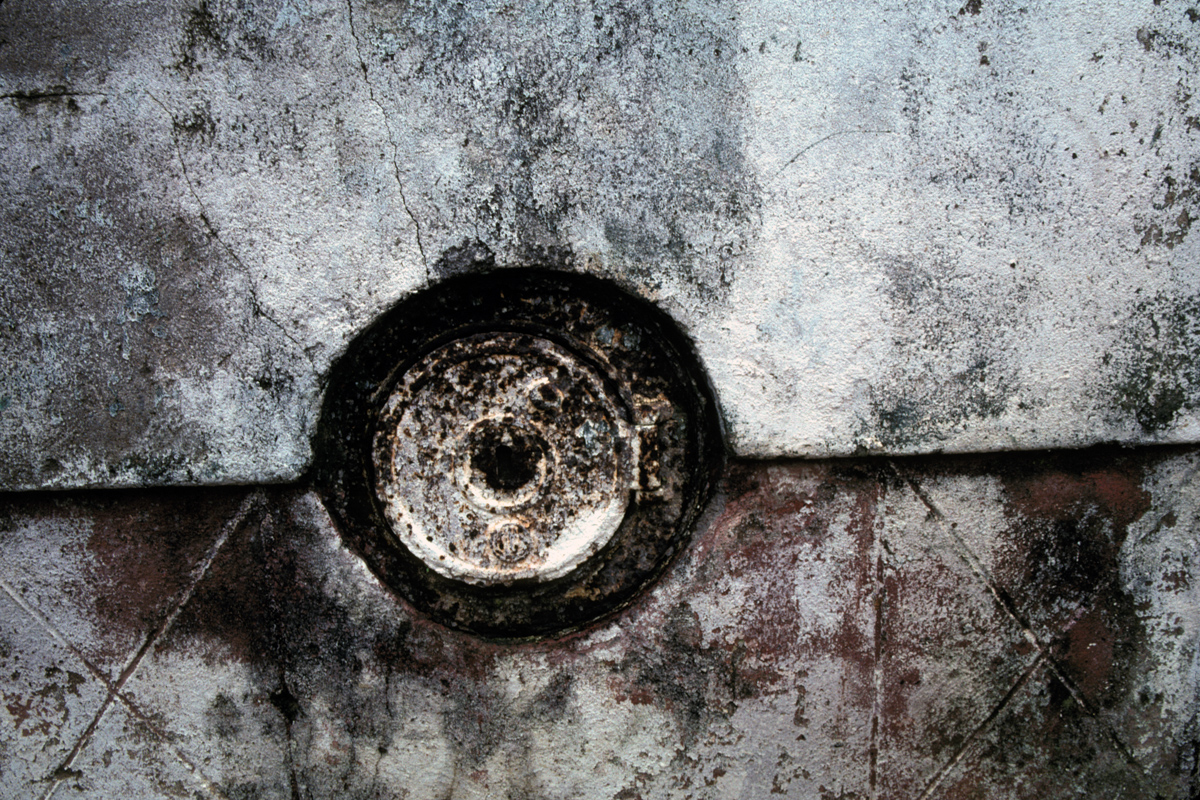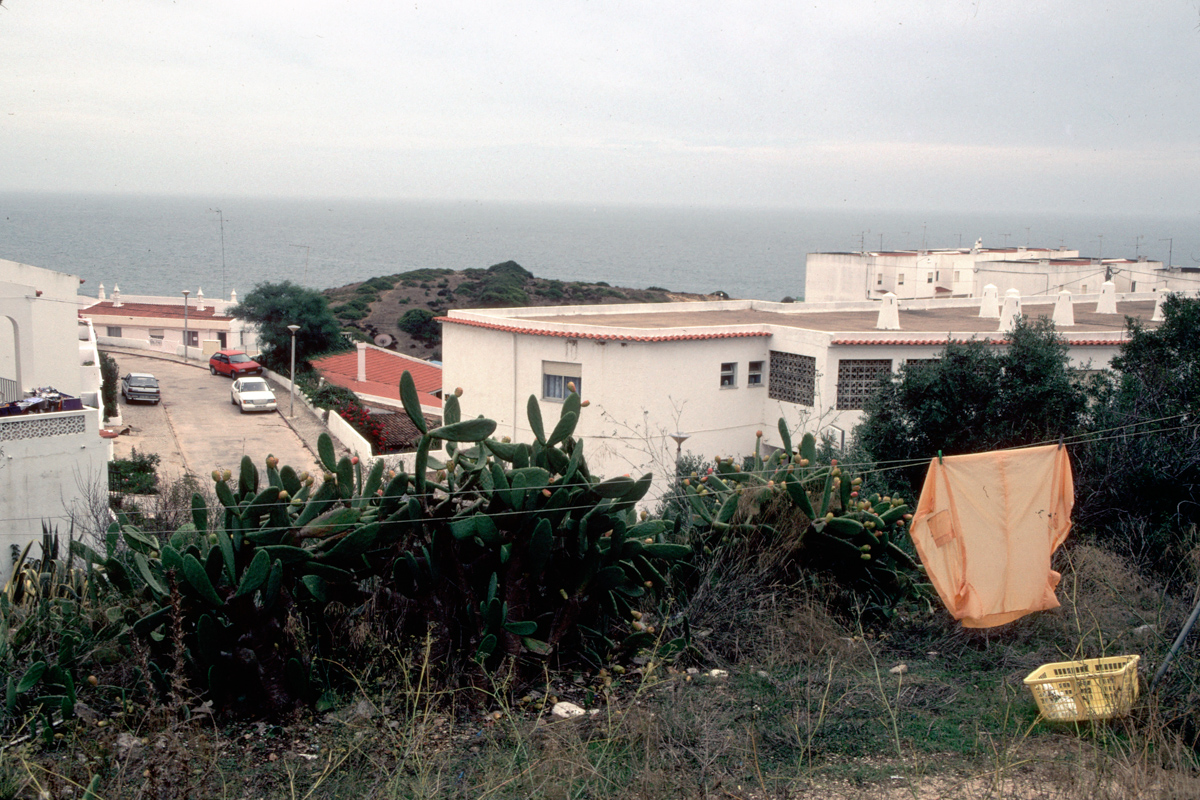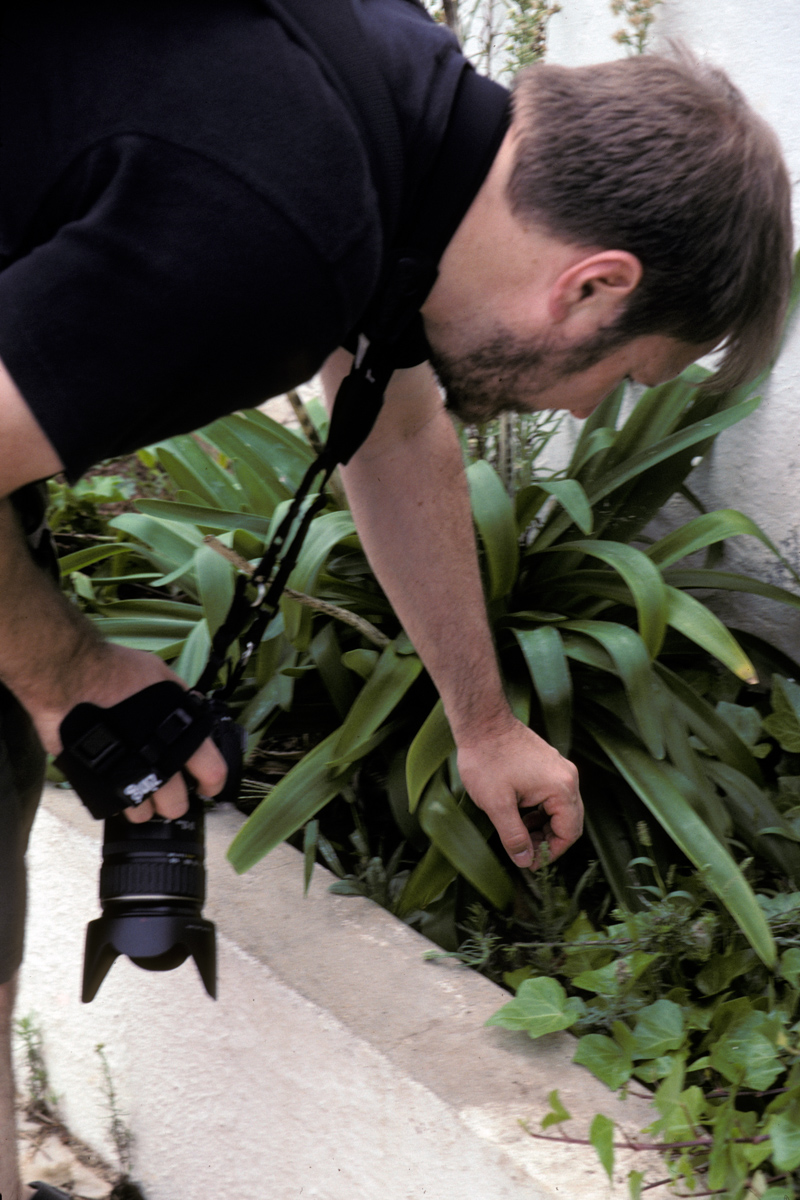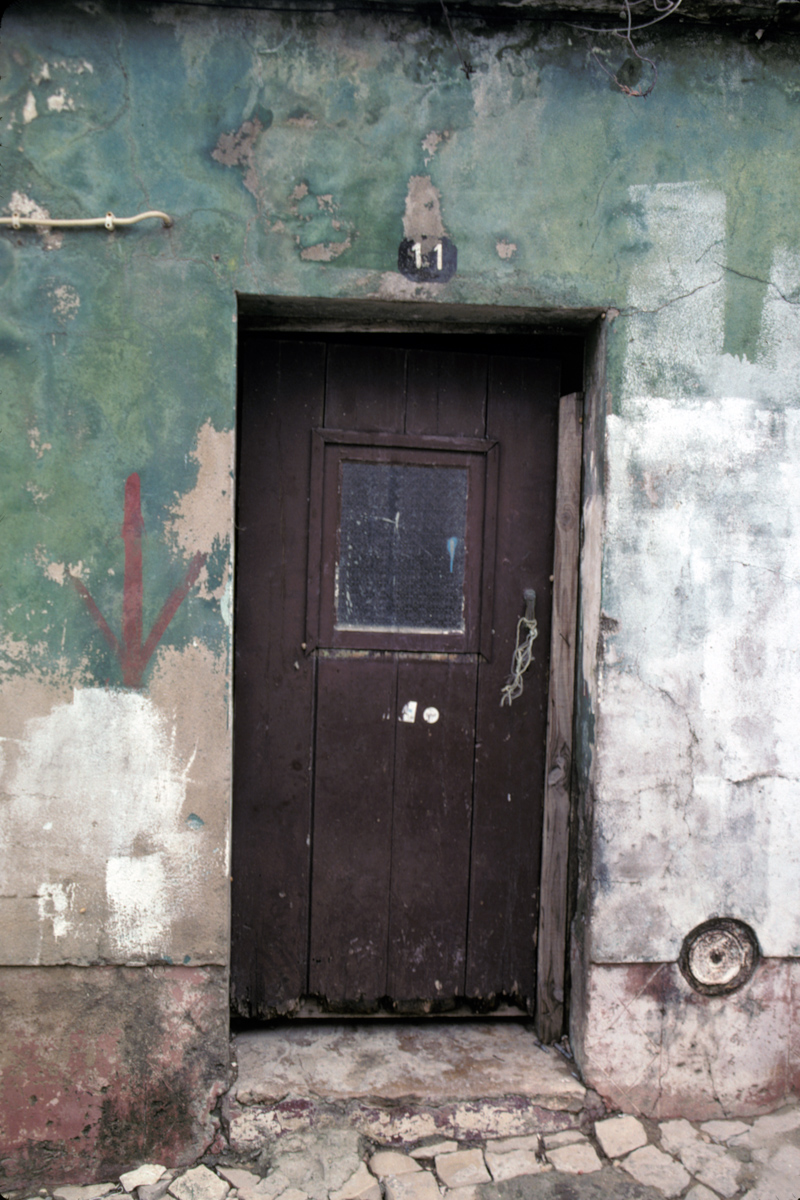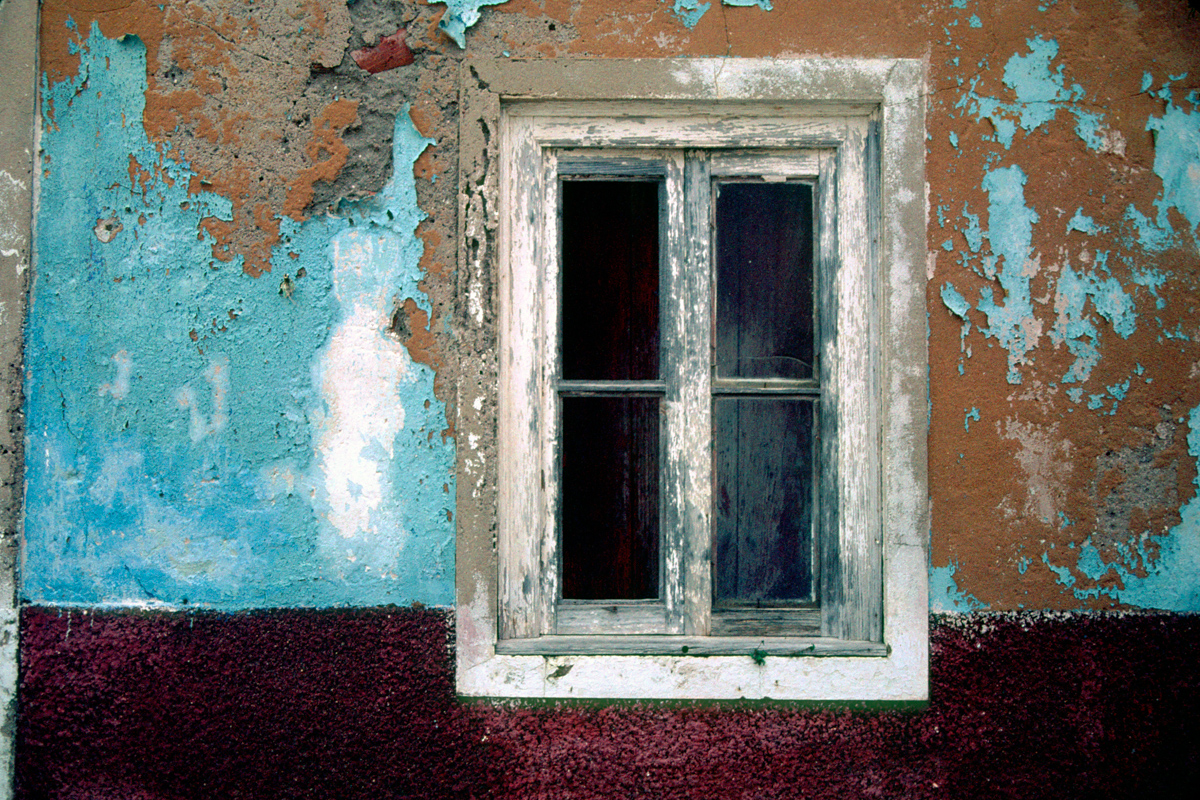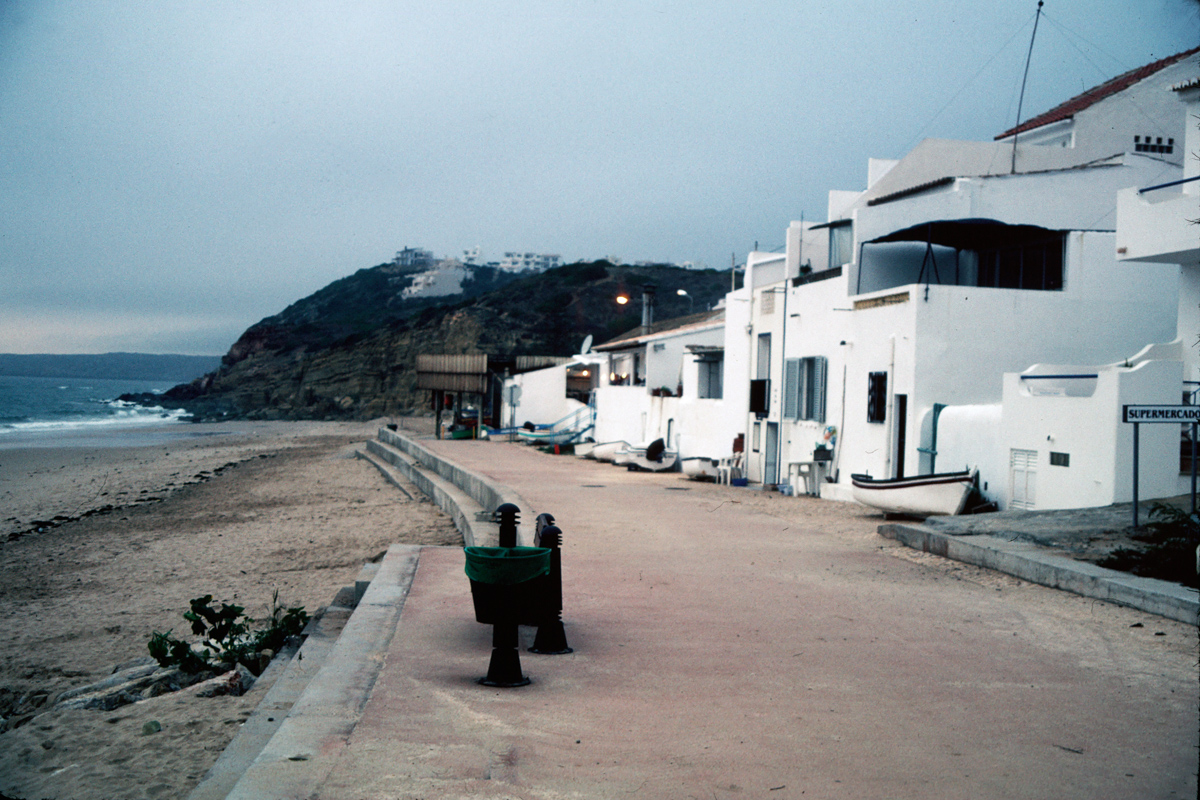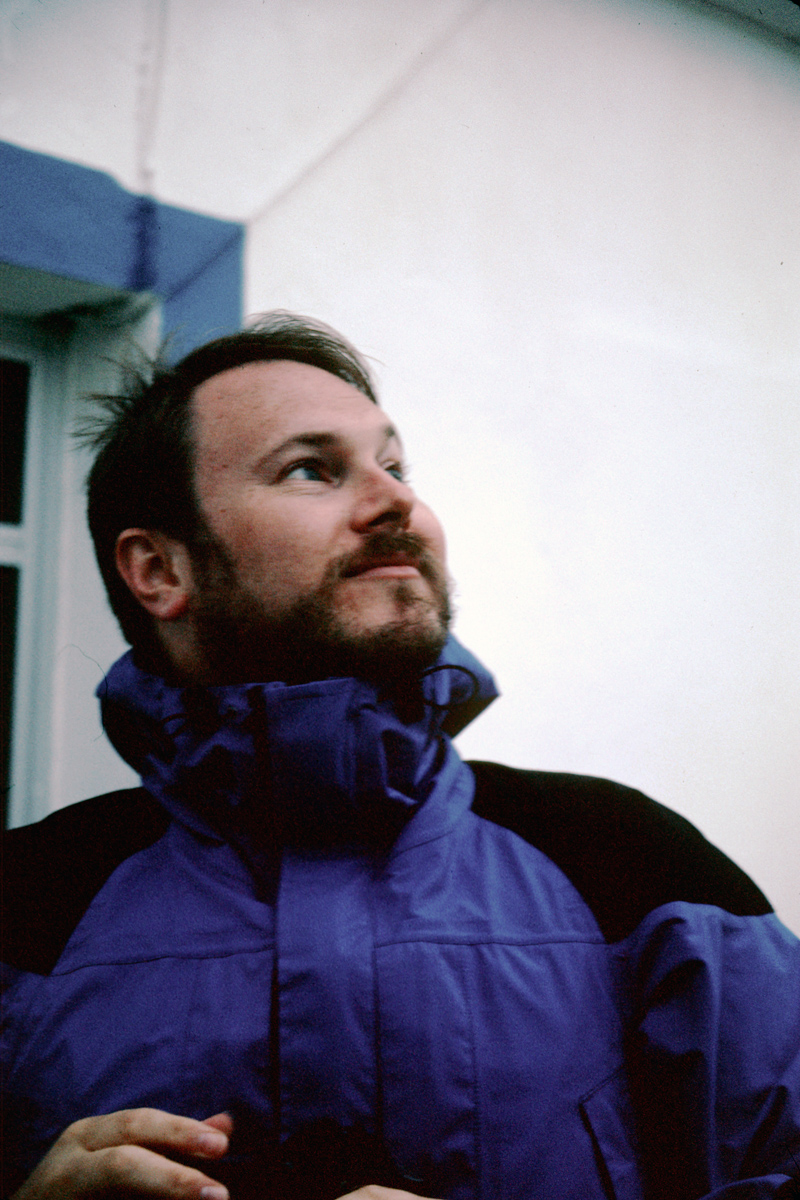Getting to Salema entailed taking a bus to Faro, switching to another bus to Lagos, and then hiring a taxi to go the rest of the way. This bus trip was fine – we were getting more used to this mode of travel. The station at Faro was scuzzy, no more than a three-sided shelter wrapped around enough space for a few buses to pull in. The bathroom was ultra-scuzzy: no toilet seat or paper. Nonetheless, it was my best and only option. We had some time to kill before catching the bus to Lagos, so we wandered down the block and found a place to selling ice cream sandwiches.
Getting There
The bus to Lagos was a tall, double-decker bus. We stowed our luggage, and then clambered up to the top level, thinking it would be a good way to see the sights. Alas, the seats were set so close together that my legs didn’t fit between the back of my seat and the seat in front of me. I spent the journey sitting sideways!
Once in Lagos, we needed to call ahead to Salema to see if we could find a place to stay. We didn’t have any luck with the listings in our book, but one of them recommended someone who had rooms in her home. She had space for us, as long as we were willing to stay two nights instead of the one we had been intending. We took a moment to think this over, and decided to go for it. This was the right decision; we had a very pleasant and relaxing stay there.
The next project was to find a cab to take us to Salema, since we’d missed the last bus. This proved a bit tricky. Our guidebook told us that if we walked down the main road, we’d come across the taxi stand in a little less than half a mile. So we set off in that direction, eyes peeled for a cab. Well, we hoofed it all the way to the end of town, as identified by the statue of Henry the Navigator. This was about twice the distance we were supposed to go. So, where was the taxi stand?
We began to backtrack, maintaining extra vigilance for signs of loitering cab drivers. This time, we did find it, and immediately understood how we had missed it the first time. All the cabs we dark BMW or Mercedes sedans! The only distinguishing marks on the these cabs were six-inch-square stickers on the passenger doors with a letter “T.” We had walked right past without a second look.
After this discovery, we soon found a driver willing to take us into Salema. He spoke good English, and seemed to enjoy practicing it with us. We had a pleasant conversation, in which he bragged a little about various Portuguese accomplishments in history.
Once we got into Salema, some confusion ensued in getting to the villa. After several attempts to follow the directions we’d been given, we were having no luck. Our driver pulled into a hotel lot and called Leeza, the proprietor, on his cell phone. She gave him directions again, and we got lost again.
In the midst of this, Dan had gotten out of the cab to help figure out where we were going, and spotted a little fellow we dubbed Hoppy the Frog. (Never mind that he was most likely a toad.) For the rest of he time we were in Salema, he looked all over for another toad, wanting me to see one, but to no avail.
After another stop, another call, and a dose of grief for our poor cabbie from Leeza, we finally made it to our destination.
As soon as we got out, Leeza started berating the cab driver some more. It seemed she had assumed he was being deliberately dense in order to rip us off. She didn’t realize we’d agreed on a flat rate before starting out, so there was nothing in it for him to take more time. Oh well, Dan compensated by giving him a good tip.
Our hosts were very friendly to us once we the cab driver left. Leeza was originally from Brazil, and her husband was German. Their home was lovely, and our room was cozy and comfortable. The yard had a nice garden and a pool, which we took advantage of later in our stay.
By now, it was about 9pm. We hadn’t eaten a real meal all day, and were very hungry, so we headed down into town for some dinner. We ate on the patio of Mira Mar, a small place facing right out onto the beach, run by German expats. Our waitress was pleasant and friendly, with lots of good humor and hospitality. The food was simple but tasty: roasted chicken with a slightly spicy piri piri sauce, and a nice glass of sangria!
Beach Bumming
The next day was a perfect beach-town day. We had nothing on the agenda other than relaxing. We made some tea in our room, and took our time getting ready to get out and about. We slowly strolled down the hill into town, stopping to admire the view of the ocean and take some photos.
Once we got into town, we settled on the Boia Bar for a late breakfast and ate on the deck. Breakfast was accompanied by somewhat brusque service, but it was a hearty and satisfying eggs-and-bacon sort of meal, with decent coffee and juice. The view out over the water was very pleasant.
After breakfast, we took a walk on the beach. I seem to bring rain to any beach town I visit, even famously sunny ones; the day was overcast, and so not really good for traditional beach activities. I was not terribly disappointed, since I’m usually not very interested in traditional beach activities. Instead, we looked through the older, residential part of town, a little ways up from the town center. It was very picturesque, with much weathered paint and lovely tile work.
Our exploration included a couple of shops, particularly one selling a variety of jewelry, clothing and gift items that caught my eye. Dan was intrigued by what was playing on the radio: dissonant 20th-century orchestral music. He asked the shopkeeper about it, and was told it was one of the state radio stations. The shop had a nice selection of silver jewelry (a weakness of mine) and Dan bought me a lovely bracelet composed of flower-shaped links.
Since Salema is quite compact, we completed our tour by mid-afternoon, and found ourselves hungry again. We decided to go back to Mira Mar for a late lunch. The same waitress served our food, and it was another very satisfying meal.
After this, we decided to head back to our room for a bit, to relax and maybe nap by the pool. I got some reading time on the deck chair in the yard, which was delightful, right up until it started to sprinkle. We moved inside, and I and slightly embarrassed to admit that we spent a while playing Sim City, each on our own Palm Pilots.
Sim City is one of the few computer games that has ever been able to capture my attention for more than a short while. Mind you, this game session was not as unromantic an activity as you might imagine. We frequently compared notes about city management strategies, and compared the progress of our digital communities, much like the mayors of neighboring towns. Yes, I do realize that we are geeks.
Later on, we ventured out again to get some dinner at a restaurant at the foot of the hill. It was not particularly memorable, but the rest of our evening was lots of fun. After a stop into the grocery store for some snacks and other necessities, we had a bit of a pub crawl, landing at the Atabua Bar.
We took advantage of the fact that neither of us had to drive home, and made a thorough sampling of the local specialties, including caipirinhas (like mojitos, but made with cachaça, a rum-like liquor popular in Brazil) and armarguinha, an almond-flavored liquer. It’s hard for me to dislike any drink that’s sweet, almond flavored, and alcoholic! The bar was pretty lively, and the impromptu drumming lesson Dan gave me was quite amusing to the local patrons. A fun last night in Salema before we headed north to Lisbon.
